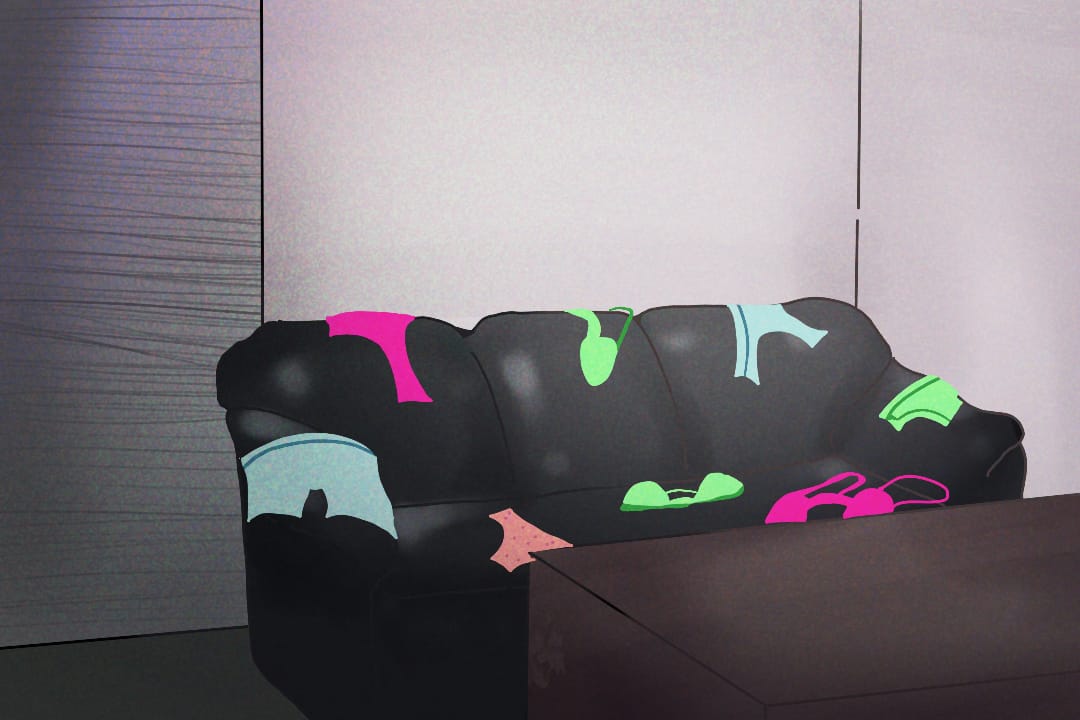Content warning: This article contains descriptions of sexual violence, racism, and dark porn content.
Whether or not you watch porn, you probably know what to expect. Some of these expectations may include heteronormativity, lack of contraceptives, or just terrible acting. But, these are relatively minor concerns when you consider just how dark porn can get. The very dark side of porn websites can include downright violent and racist videos.
In 2021, Pornhub’s own users reported over 20 per cent of the site’s videos for inappropriate content, which was then removed. Those removed videos, which violated Pornhub’s terms and conditions, may have already been posted, viewed, and shared by the time they were taken down.
Content is removed when it demonstrates non consensual sex, the potential of child sex abuse, hate speech, or similar violations. Videos like these can have an influence on the people that engage with them, portraying dangerous practices as the norm in sex. There is no justification for why these videos were made public, which is why we need a more thorough screening process before videos are posted.
A gendered industry
I think many women will agree when I say that, with few exceptions, porn is generally not made for us. This is understandable, given that men made up 71 per cent of Pornhub’s Canadian viewers this year. However, this overwhelmingly male audience doesn’t justify the misogyny present in the industry.
Far too many videos portray a gender imbalance, with women characterized by submission and men by dominance. Dynamics like this can be harmful to both sexes. Common themes in porn about how men and women should act can lead to incorrect assumptions about masculinity, feminity, and sexual orientation, idealizations of certain power dynamics, and impossible expectations about sex amongst society at large.
Very often, women are objectified in porn; a woman’s personal agency is reduced to her sexuality. Studies have established that frequent porn consumers, compared to those who watch less porn, are more likely to dehumanize women, seeing them as mechanical robots or animals.
The obsession with ‘exotic’ stars
Many porn consumers also tend to fetishize — or at least seek out — certain ethnic groups and the stereotypical roles they play. Within Pornhub’s top searches, various terms refer to racial groups, including Black, Asian, and Latina performers. Japanese ranks highest here in second place, narrowly beaten by ‘hentai’: a genre of Japanese anime with hyper-sexualized characters. Western pornography set with Asian stars tends to use racist tropes like “yellow-face sex” and “geisha sex” or fall back into the script of a shy, submissive Asian woman with a dominating white man.
Furthermore, Black men are often portrayed as experienced and deviant to contrast with the virgin white women they are paired with. This trope makes it seem as though the man is corrupting the woman. Even trending Pornhub terms like “thick Latina” or “BBC,” short for “Big Black Cock,” show how users characterize different racial groups. Stereotypes like this could easily influence real-life interactions and prejudgments about race.
Some pornstars like Mia Khalifa, whose notorious videos demonstrate disrespect for religion, are figureheads of insulting fetishism and stereotyping. Khalifa popularized “hijab porn,” which capitalizes on prejudgments surrounding Islam; the content relies on the exploitation or corruption of Muslim women by white, Christian men. What’s worse, however, is that Mia Khalifa remains one of Pornhub’s top stars.
The precarity of aggression and consent
The rising popularity of BDSM –– short for bondage, discipline, sadism, and masochism –– on porn websites blurs the boundary between sexual violence and normal consensual sexual practices. Though most videos are assumed to be consensual, some still fall into a grey area.
In a self-reflective study conducted in 2021, a random sample of heterosexual men was asked about their preferences in porn. Nearly 16 per cent reported they prefer videos featuring rape, and more than half of respondents preferred aggressive porn. While most of the users acknowledged that porn was often unrealistic, the findings suggest that there is still a connection between porn consumption and aggression. The gender imbalance of the industry comes into play here too, as men are more likely to engage in most of the verbal and physical aggression, and these behaviours are more likely to be targeted at women.
Another study analyzed the various videos that were advertised to first-time users on the top three pornography sites; one in eight of these videos portrayed sexual violence, excluding consensual BDSM. When video titles include words like “drugged,” “forced,” and “teen,” I can’t help but question the expectations this content sets. Further, there is no definite way of knowing if assault or other crimes are taking place in these videos, especially with the rise of amateur-made porn. Videos marketed as “amateur” are unprofessionally made, featuring unpaid actors and poor camera work; without vetted filmmakers and known actors, amateur porn has greater potential for illegal practices like assault.
The solution is simple
In spite of these concerns, pornography is still widely accessible and easy to upload. The possibility of human trafficking, underaged stars, assault, or other illegal content on porn sites demonstrates the necessity of thorough content investigation. We need human moderators to screen videos and guarantee that they are not dangerous.
Dangerous porn does not have to be criminal either; targeted sexism and racism in porn can have consequences too. These videos can cause harm if they get through to someone easily influenced or, worse, young. For some users, misogynistic or violent porn could have a lasting effect on their notions about sex and their treatment of other people.
Given the scale of the porn industry and its resources, there is no justification for the amount of unsafe porn that has been made available to users. By not addressing these potential dangers, we are supporting an industry that presents stereotyping and violence as natural occurrences in sexual activities.
Leah Cromarty is a third-year student at University College, studying philosophy, English, and history.


